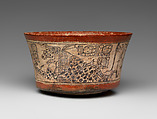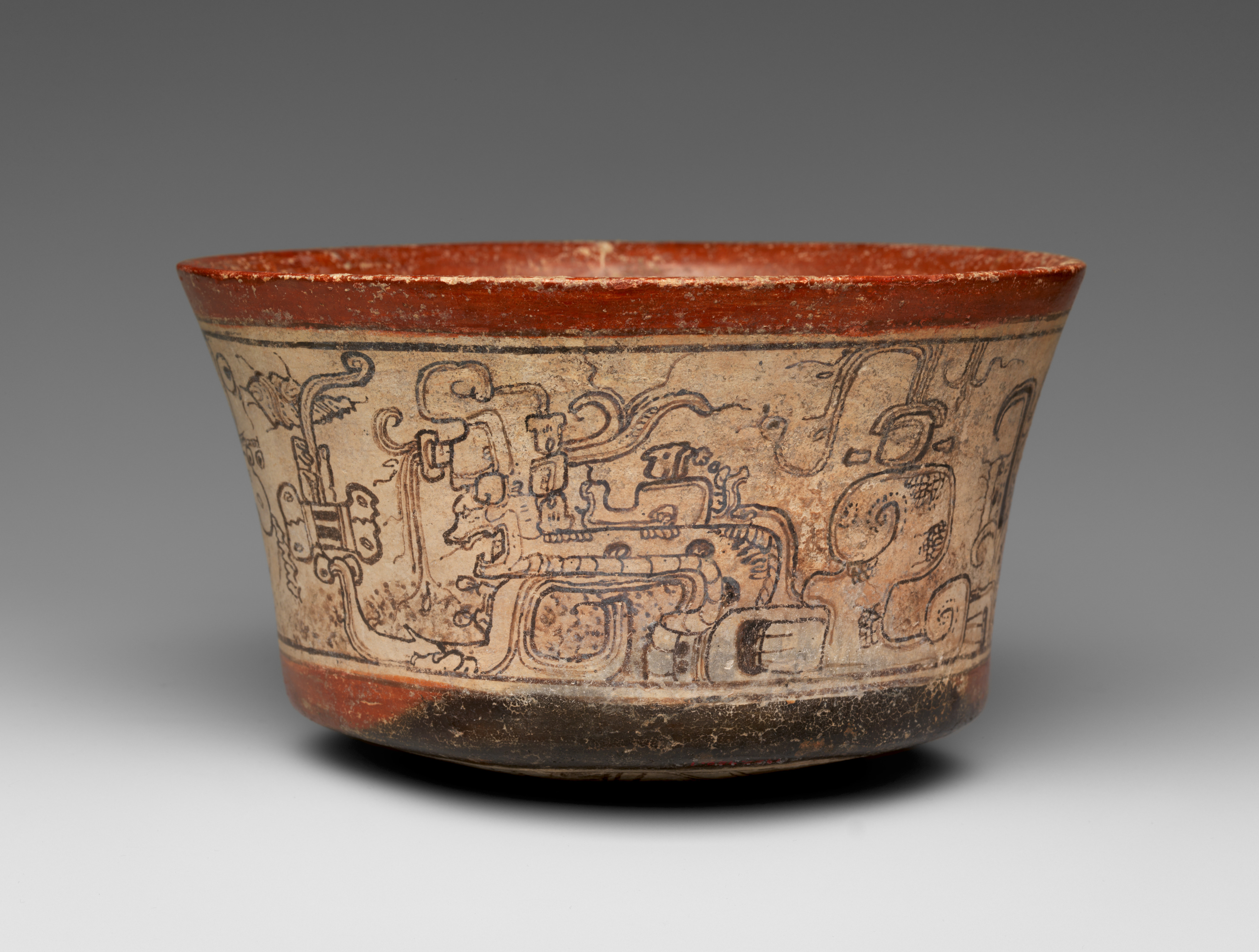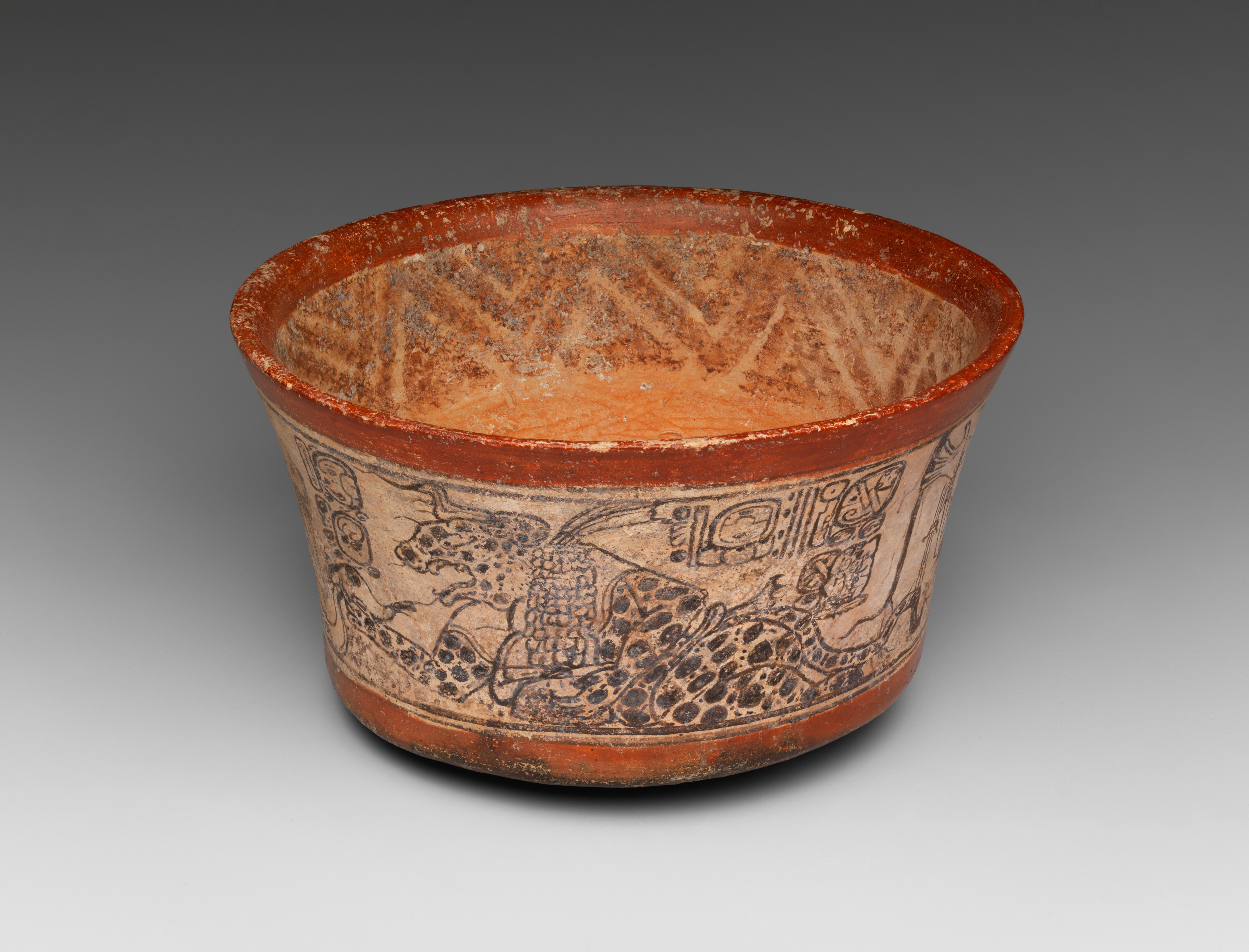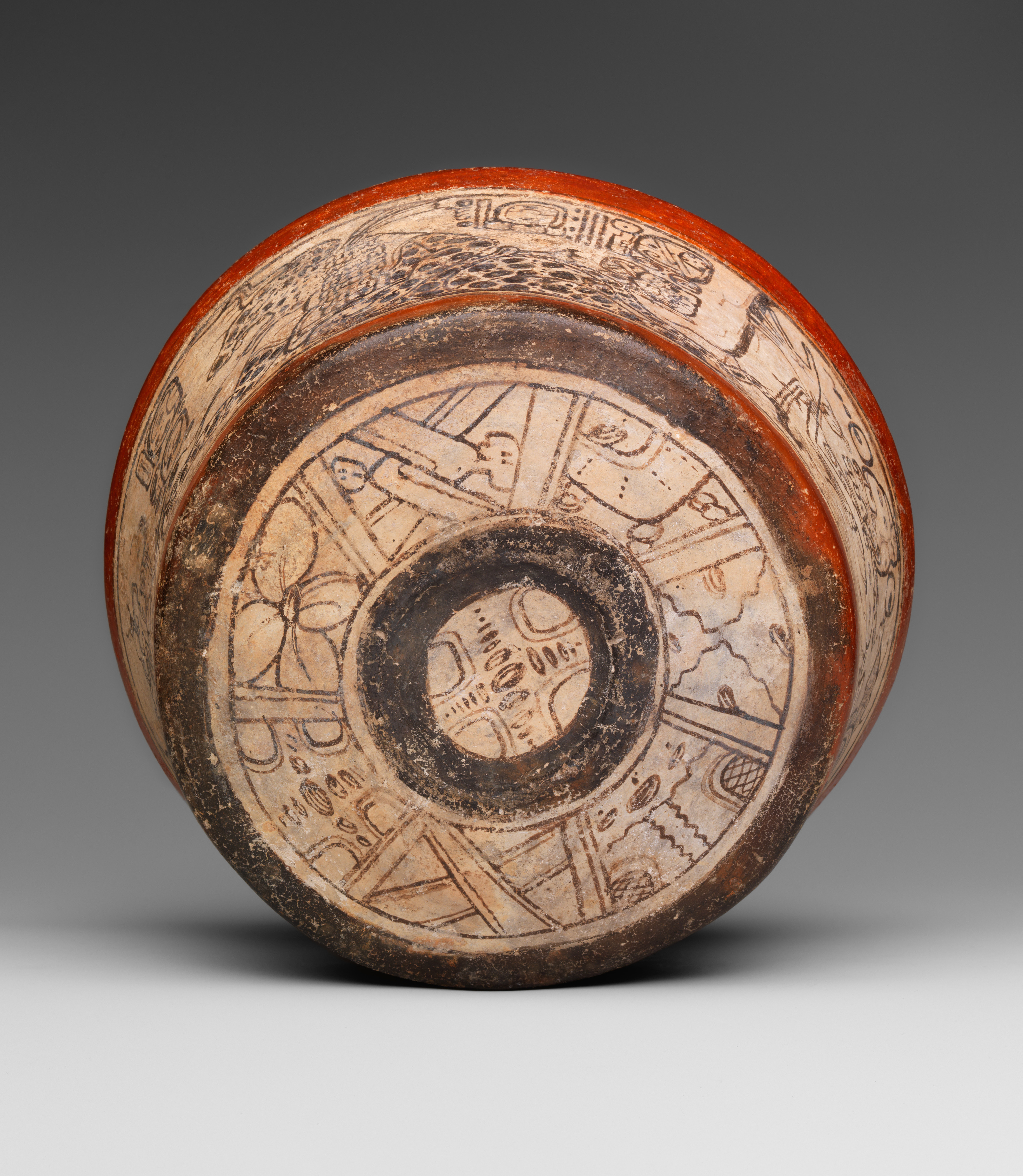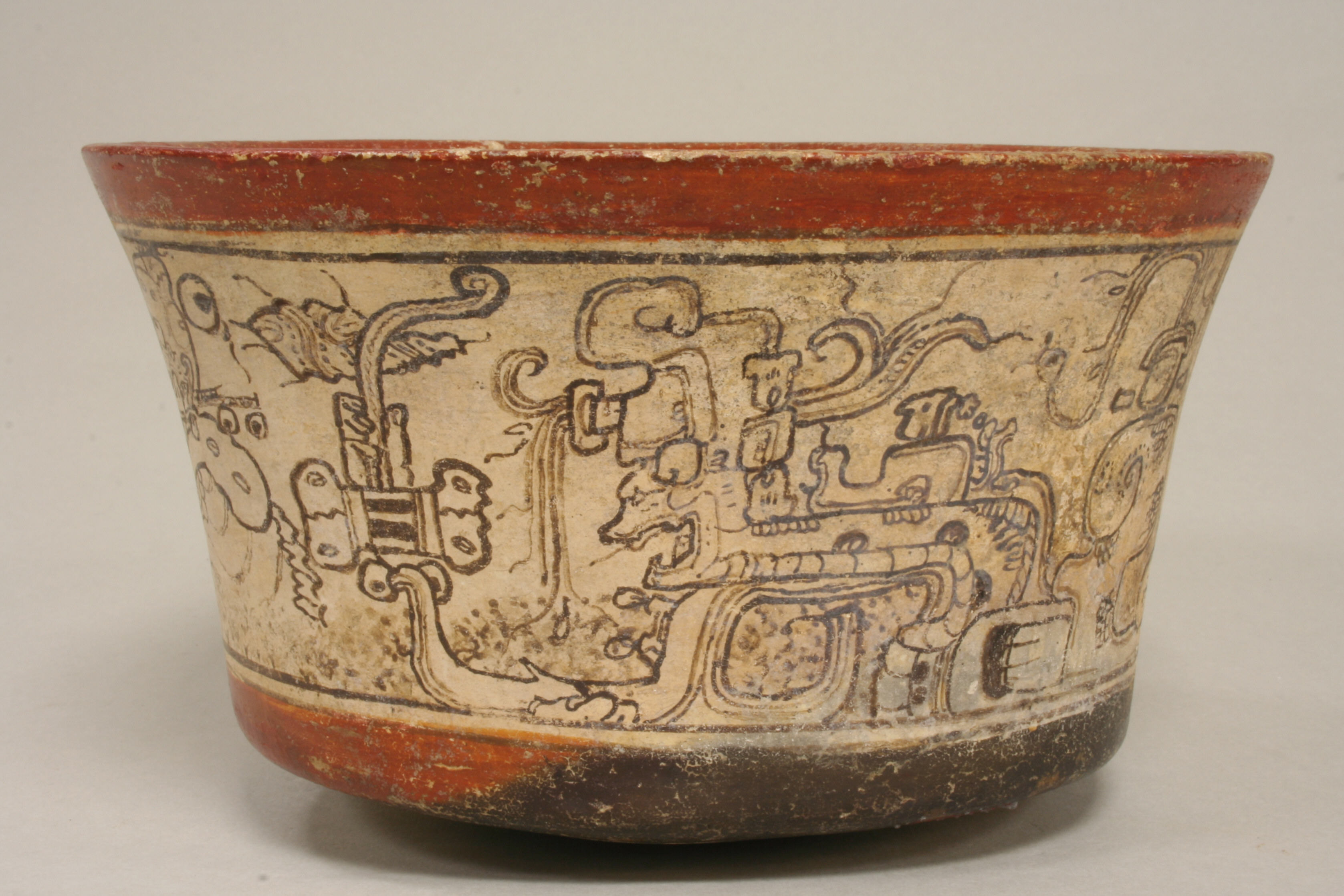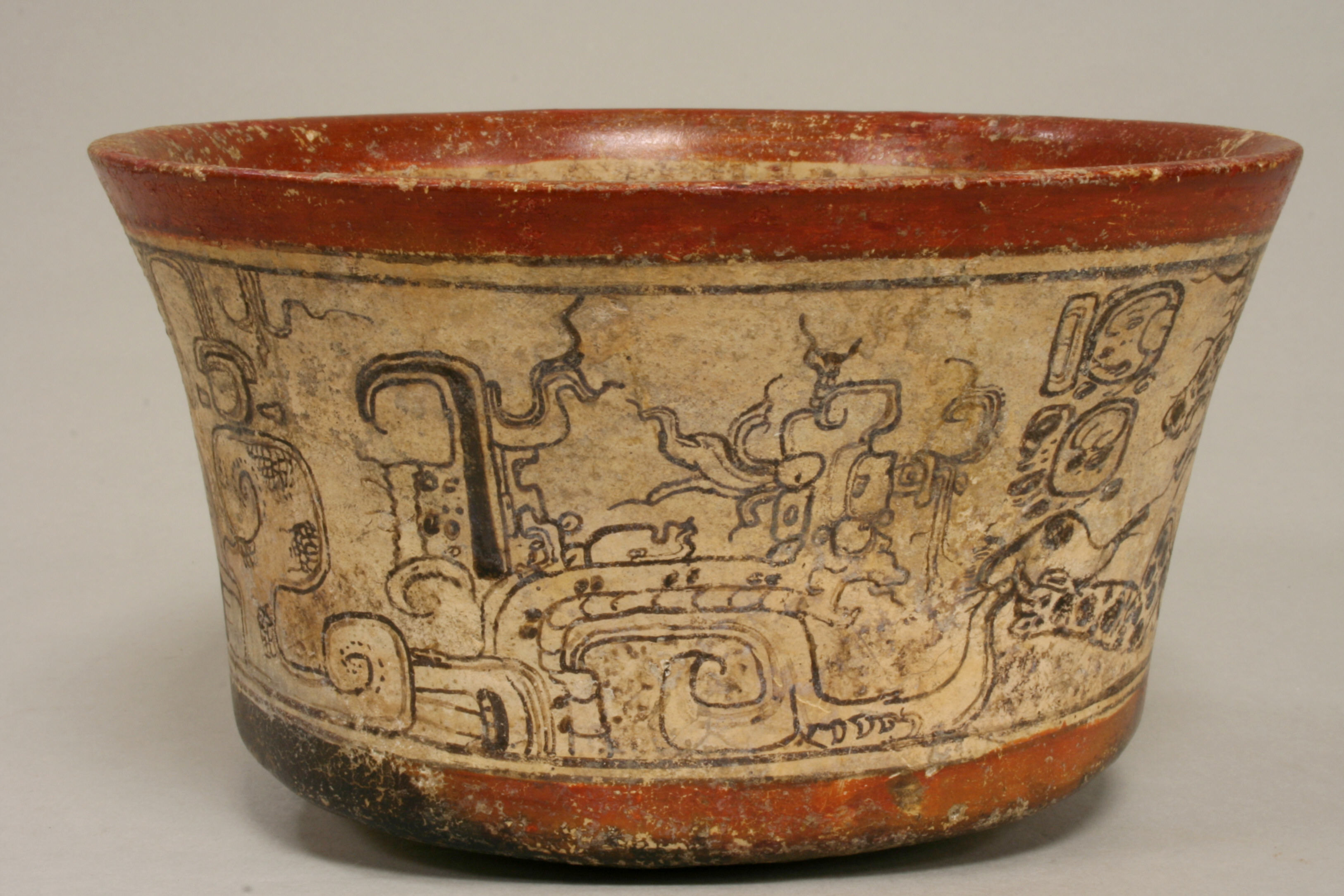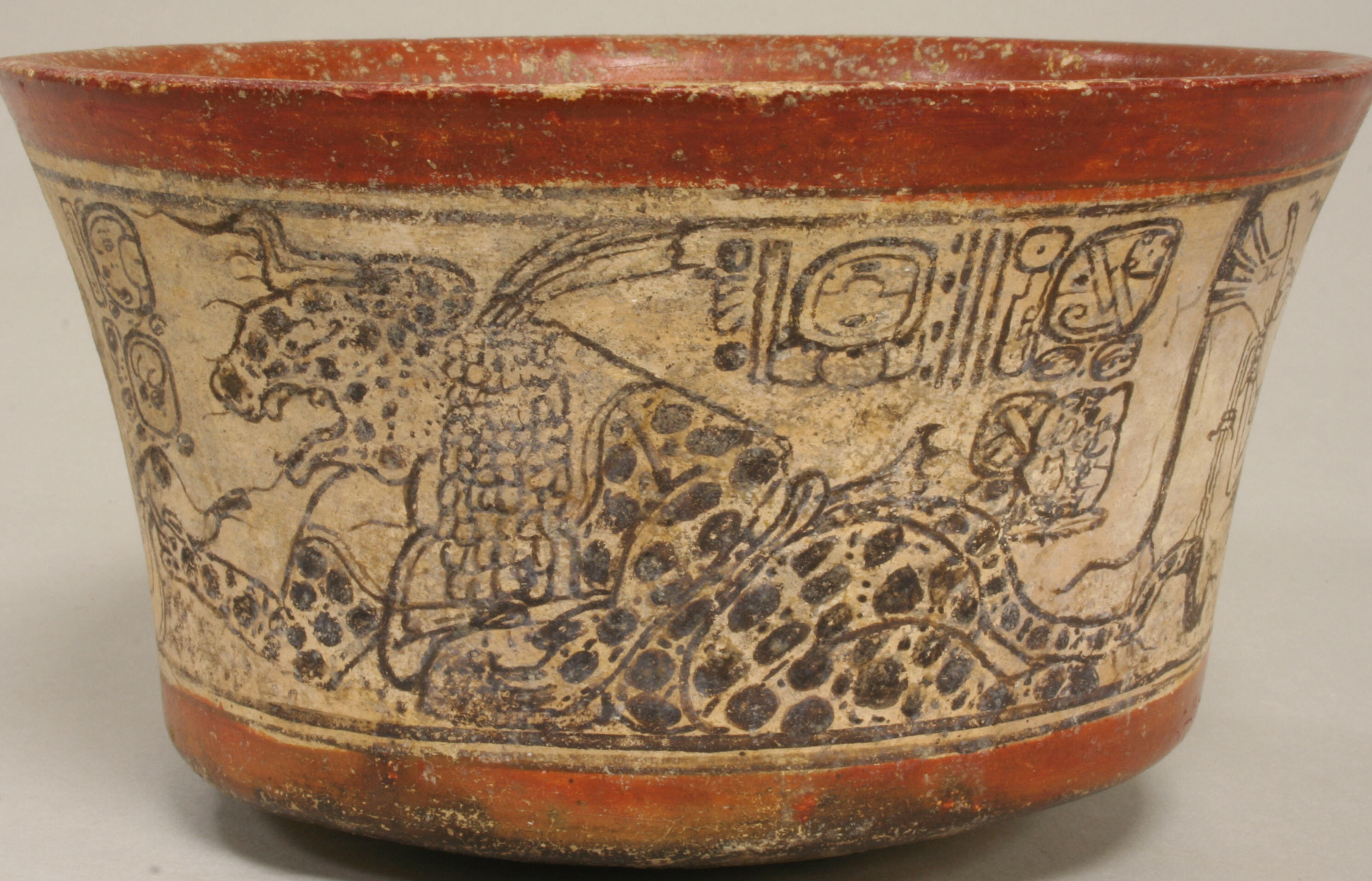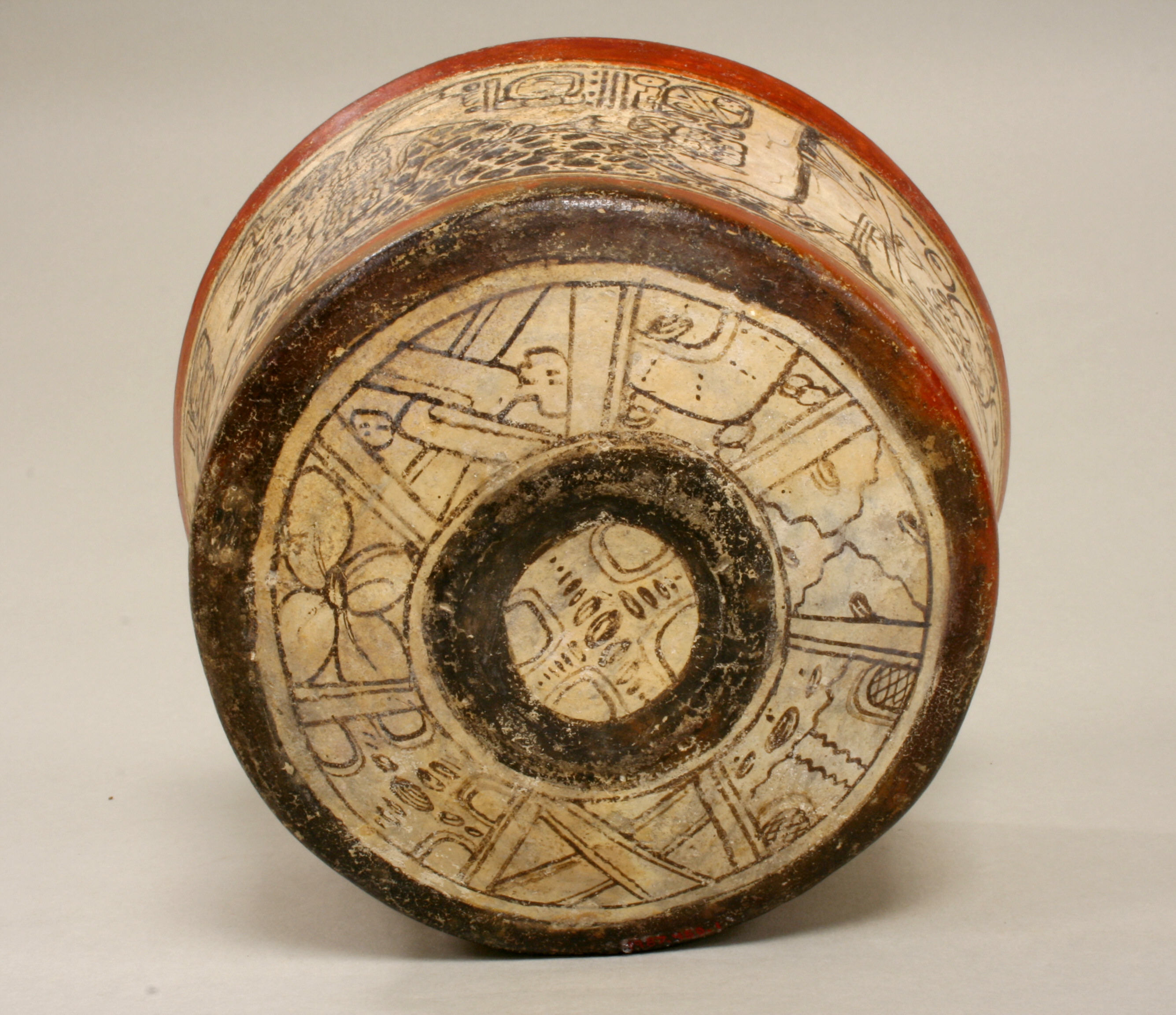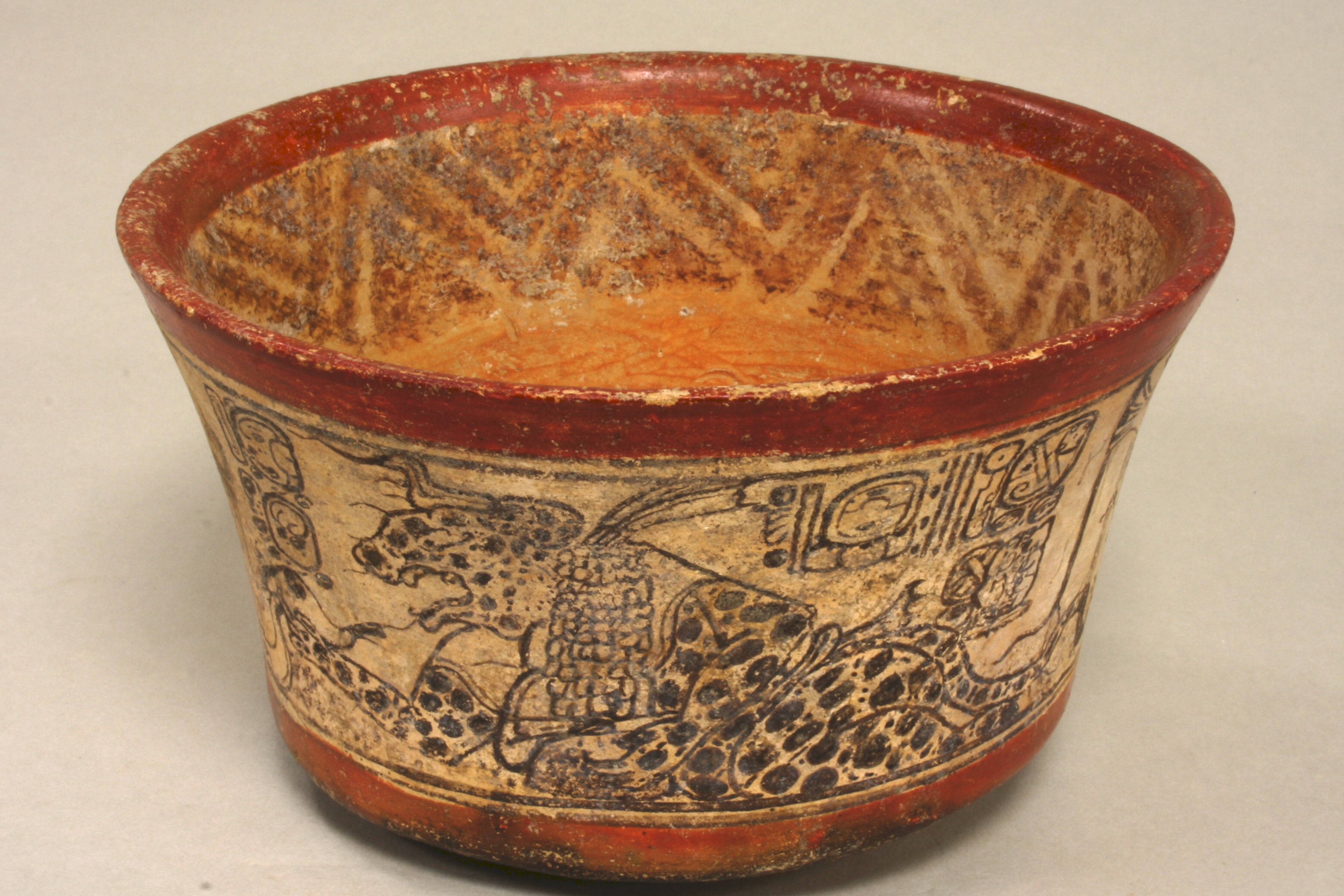Bowl, Mythological Scene
Not on view
The enigmatic scene on this cup painted in the 'codex-style' shows a jaguar holding an enema bladder with a syringe wearing what seems to be a bib made of white cotton. The ancient Maya consumed alcoholic beverages through enemas; special bone enema tubes have been found in royal tombs. In this scene, a supernatural bi-cephalic serpent is shown emerging from the enema; the head of the serpent to the left of the rollout photograph holds an axe, as if to threaten a skeletal death god. The death god is shown legless with its hands raised to the right of the jaguar. This type of jaguar makes an appearance in other vessel scenes, though a lack of comparative imagery and an overpainted hieroglyphic text impedes interpretation of the scene.
‘Codex-style’ pots are so-called for the style of painting which bears a close resemblance to the four extant screen-fold Maya books, known as codices, located in Madrid, Paris, Dresden, and Mexico City. These books date to the Postclassic Period (ca. a.d. 1000–1492). The characteristics of the codex-style are a cream or yellowish slipped background, often framed by red bands above and below, and a black calligraphic line outlining figures and hieroglyphic texts. Sometimes the painters applied a gray wash to shade figures or other features. In contrast to the richly polychromed vases and bowls from the large corpus of Maya vessels, codex-style pots stand apart in their grayscale, which is almost certainly a reflection of their development vis-à-vis calligraphic books.
Due to rights restrictions, this image cannot be enlarged, viewed at full screen, or downloaded.
This artwork is meant to be viewed from right to left. Scroll left to view more.
